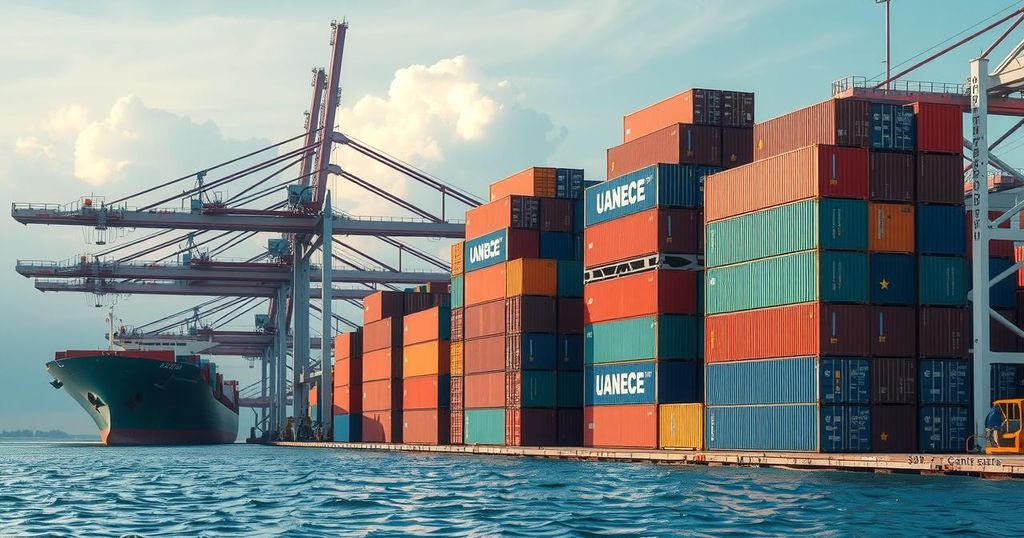Impacts of New Tariffs Imposed by Donald Trump on Trade Relations and Consumers

Donald Trump has enacted new tariffs on imports from Canada, Mexico, and China, causing market volatility and raising concerns among consumers. In response, Mexico and Canada agreed to enhanced border security measures to mitigate tensions. However, China’s retaliation and mutual tariff impositions complicate the trade dynamic, leading to broader economic implications for American businesses and consumers.
Former President Donald Trump’s administration implemented new tariffs affecting imports from Canada, Mexico, and China, promising to reshape U.S. trade dynamics. These levies include a 25% tax on certain goods from Canada and Mexico, as well as a 10% tariff on numerous imports from China, ranging from oil and timber to textiles and electronics. While the intent was to address trade imbalances and disrupt drug trafficking, the tariffs caused market volatility and raised concerns regarding the cost increases for American consumers.
Negotiations aimed at averting escalated trade conflicts resulted in agreements between Trump, Canadian Prime Minister Justin Trudeau, and Mexican President Claudia Sheinbaum. The two neighboring countries offered to enhance border security and cooperate on drug enforcement, partly to mitigate the economic repercussions of the tariffs. Despite preliminary agreements, the looming threat of tariffs remains a cause for concern in both domestic and international markets.
Trump’s policies have generated a complex relationship with foreign trading partners. China swiftly retaliated with its own tariffs, prompting both Canada and Mexico to implement reciprocal duties. The Canadian government announced potential tariffs on up to $155 billion worth of U.S. goods. This tit-for-tat approach has established a potentially fraught trading environment, risking an ongoing cycle of economic repercussions.
As the administration faced criticisms over the impact on consumers, Trump acknowledged the likelihood of price hikes and limited supply for various goods. He previously promised economic benefits through his trade agenda, yet recent developments suggest a reversal of this narrative. His administration’s approach thus invites scrutiny regarding the feasibility of delivering the promised improvements without inflicting negative consequences on everyday Americans.
The ongoing situation prompts a reevaluation of business operations, with executives voicing needs for regulatory stability to facilitate financial forecasting. Tariff threats are creating discomfort within supply chains as organizations assess their vulnerability to ongoing trade tensions. As both sides navigate these discussions, the focus remains on balancing security measures and trade relations while minimizing adverse effects on consumers and businesses alike.
The recent tariffs on imports from Canada, Mexico, and China mark a significant turn in U.S. trade policy under Donald Trump’s administration. The tariffs aim to address longstanding issues surrounding trade imbalances and to enhance national security in relation to drug trafficking and immigration. However, these measures also incite retaliatory responses from affected countries, complicating international relations and raising concerns about economic repercussions for American consumers and businesses.
In conclusion, the tariffs imposed by the Trump administration on imports from Canada, Mexico, and China represent an aggressive restructuring of U.S. trade policy with implications for international relationships and domestic economic conditions. While negotiations have produced preliminary agreements to address some issues, the ongoing tariffs continue to pose challenges for consumers and US companies alike. The uncertain environment calls for strategic planning to navigate the evolving landscape of U.S. trade relations.
Original Source: www.hindustantimes.com








